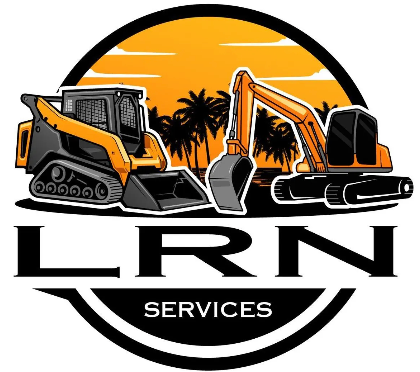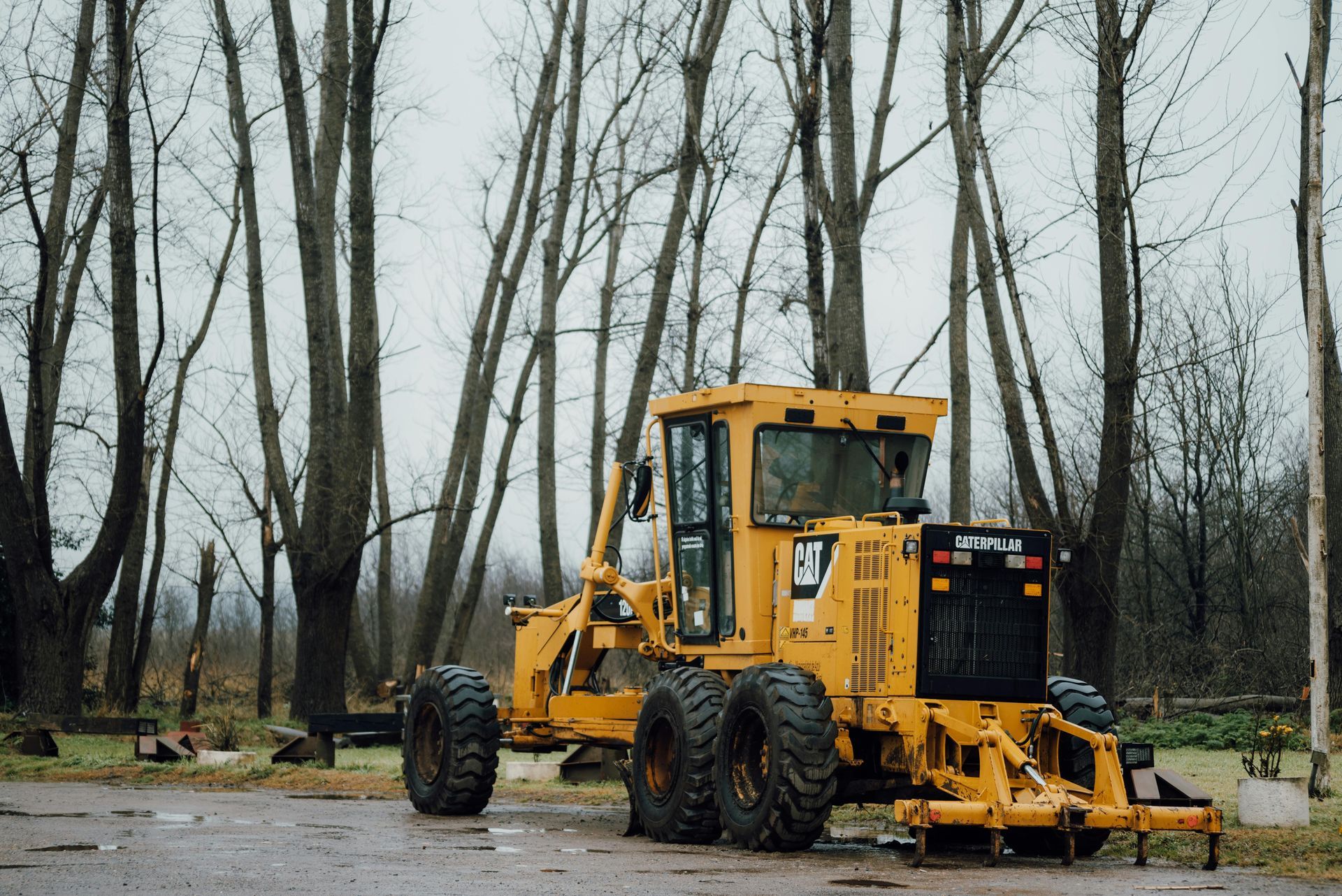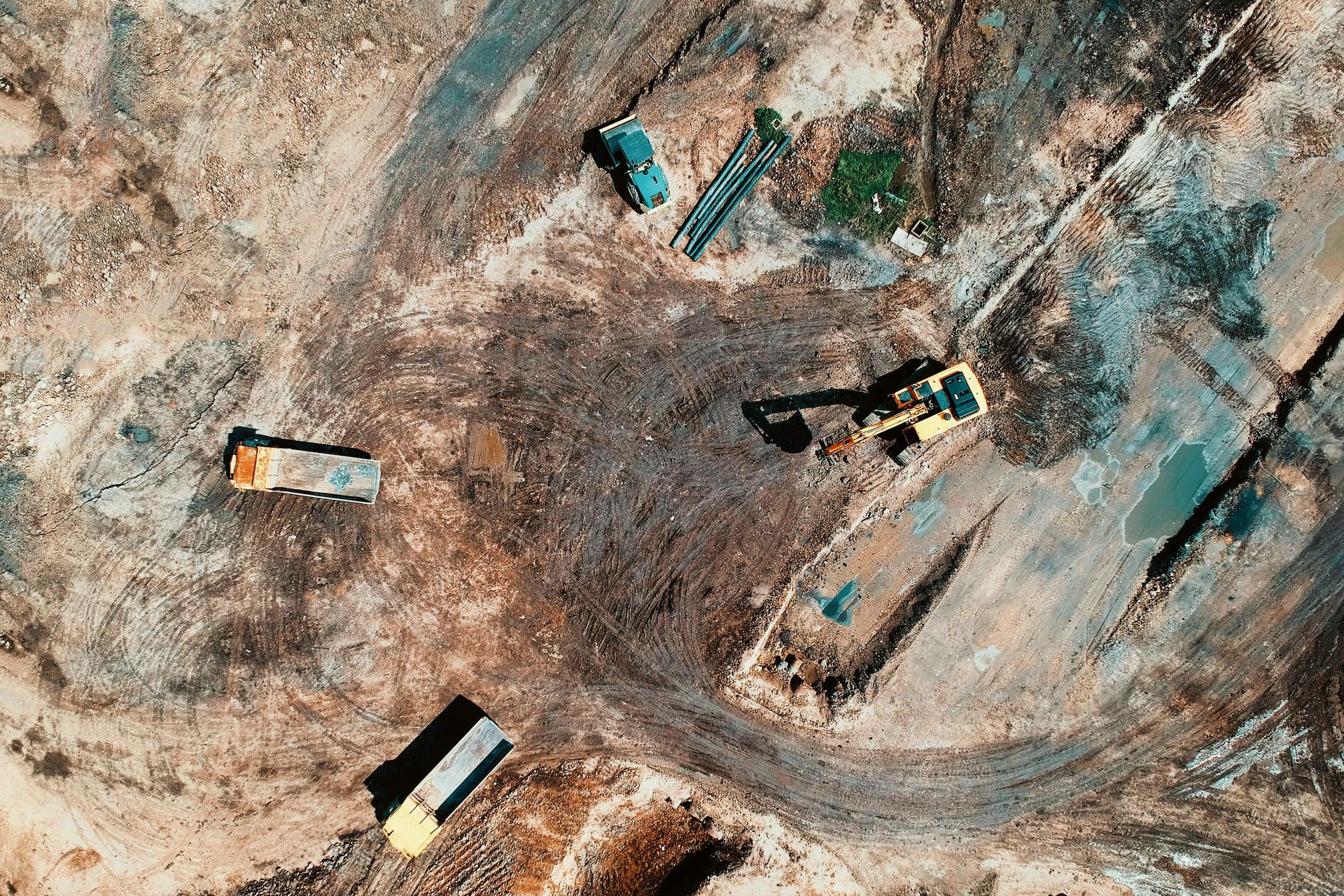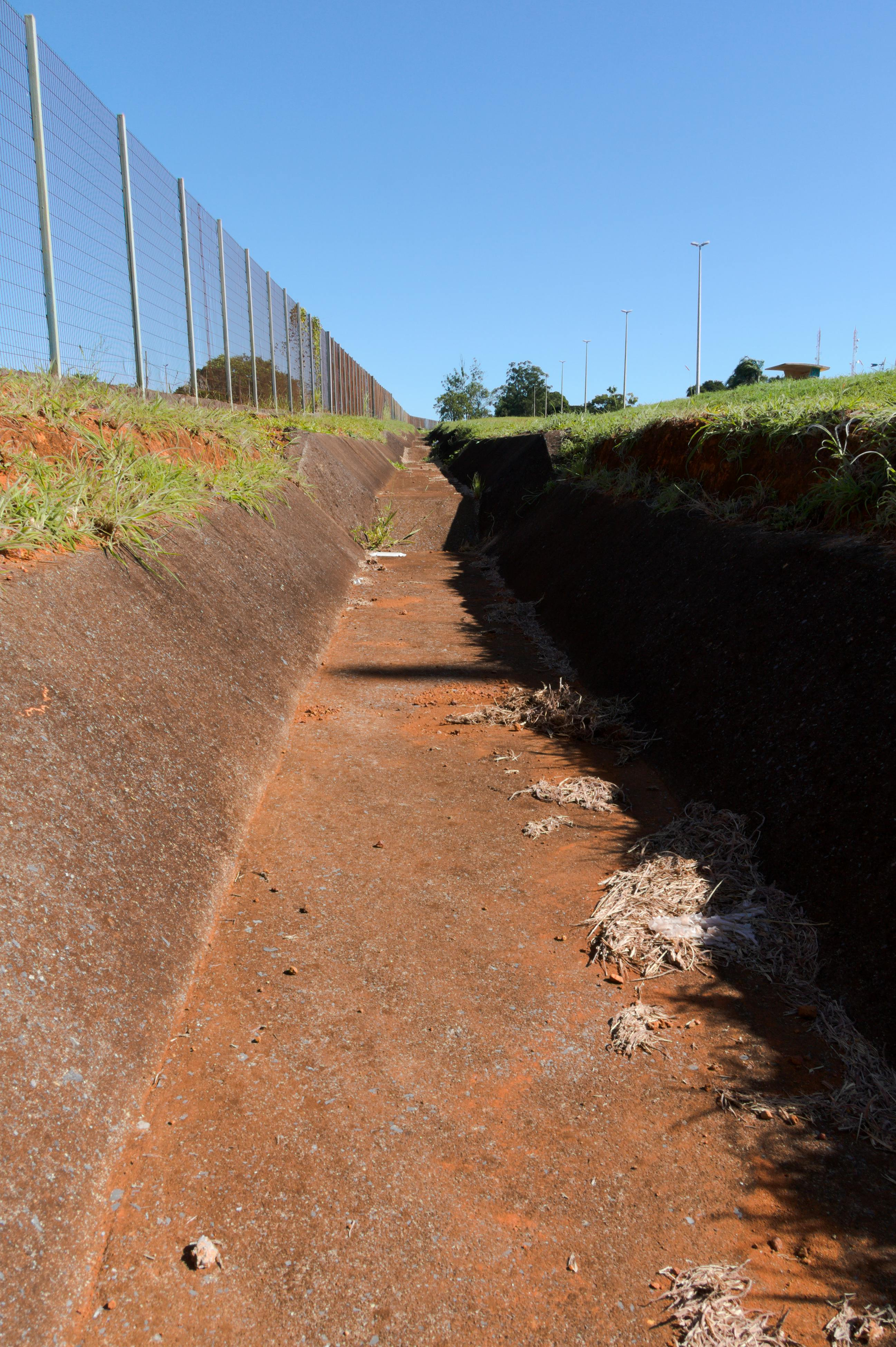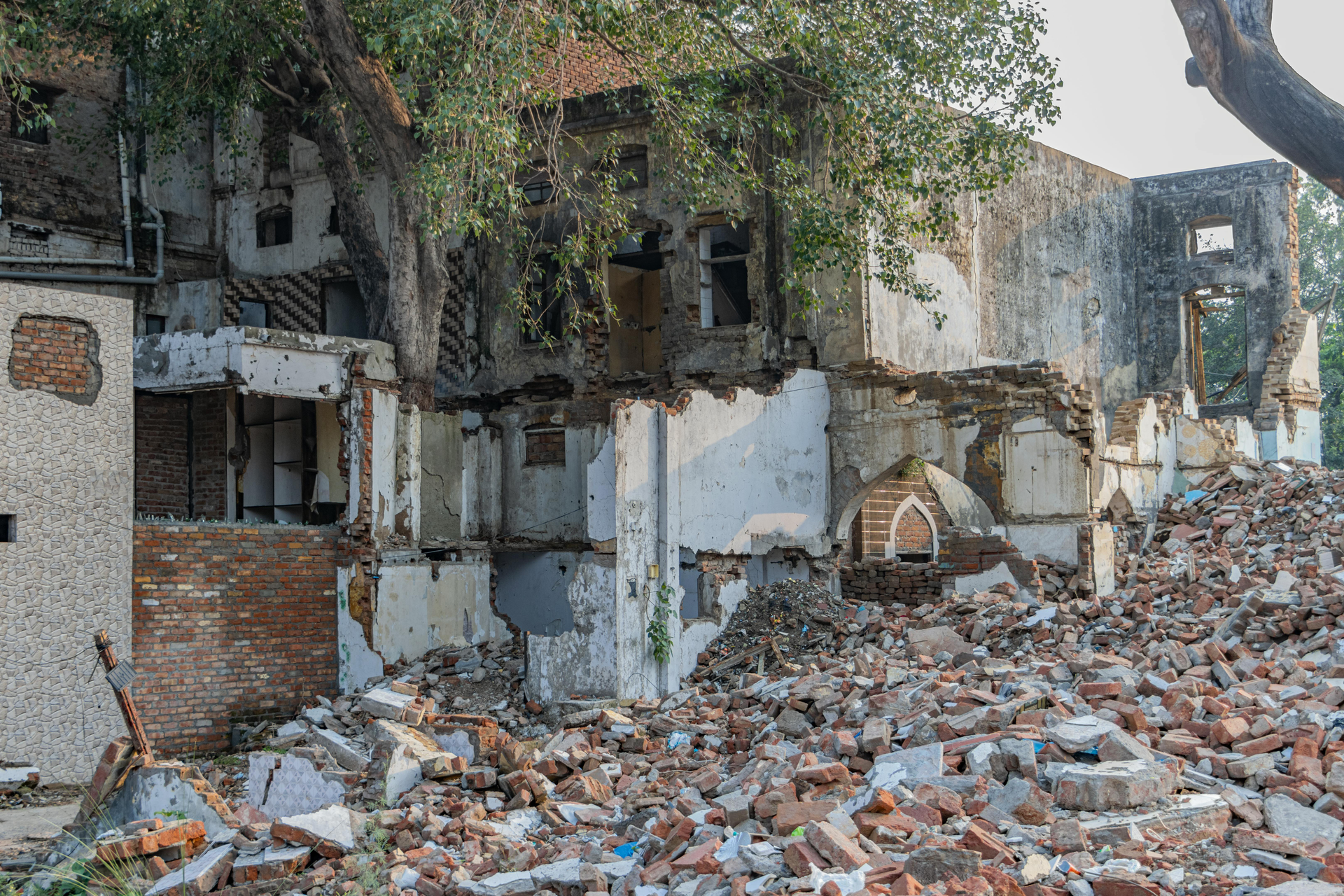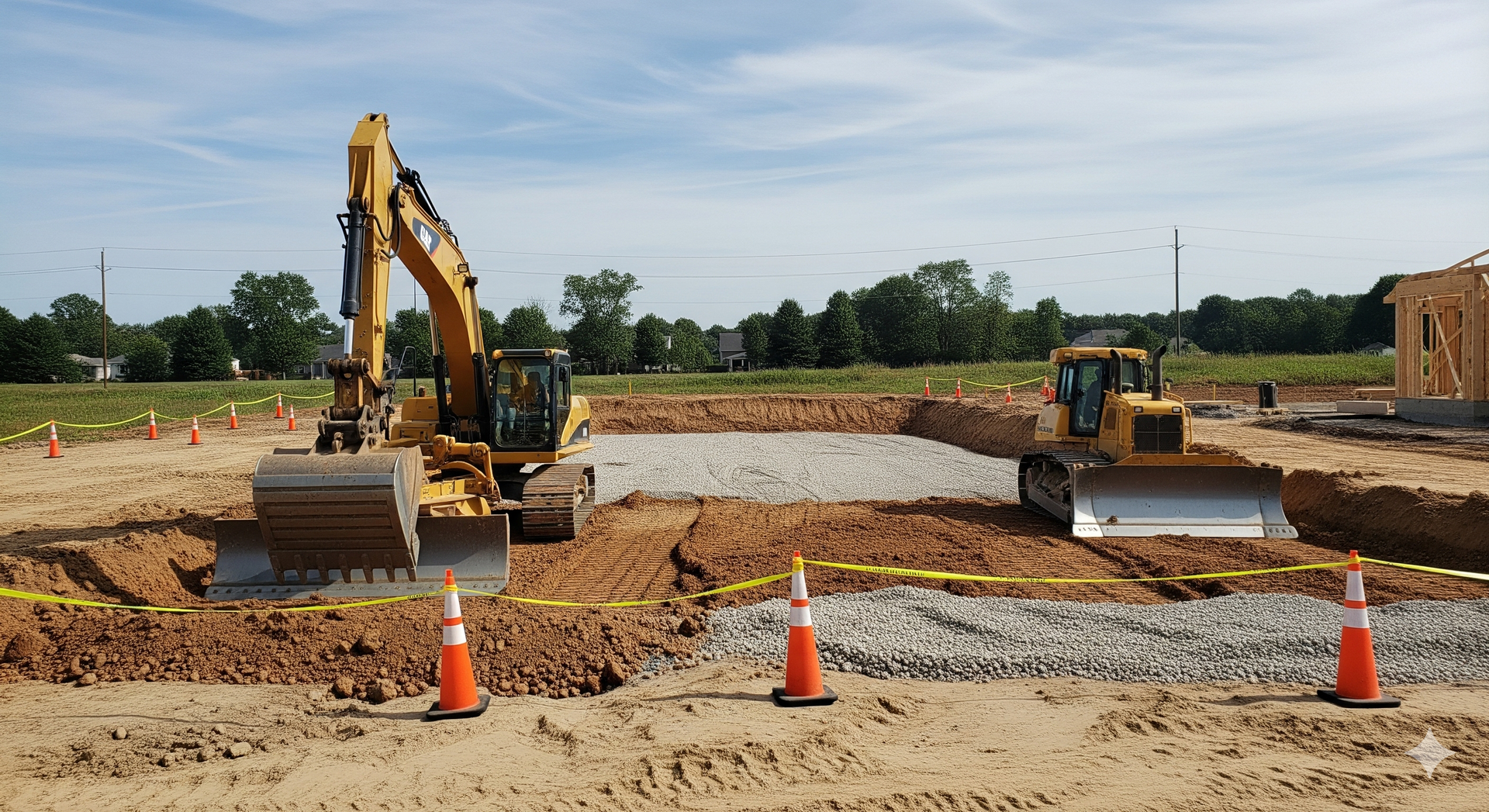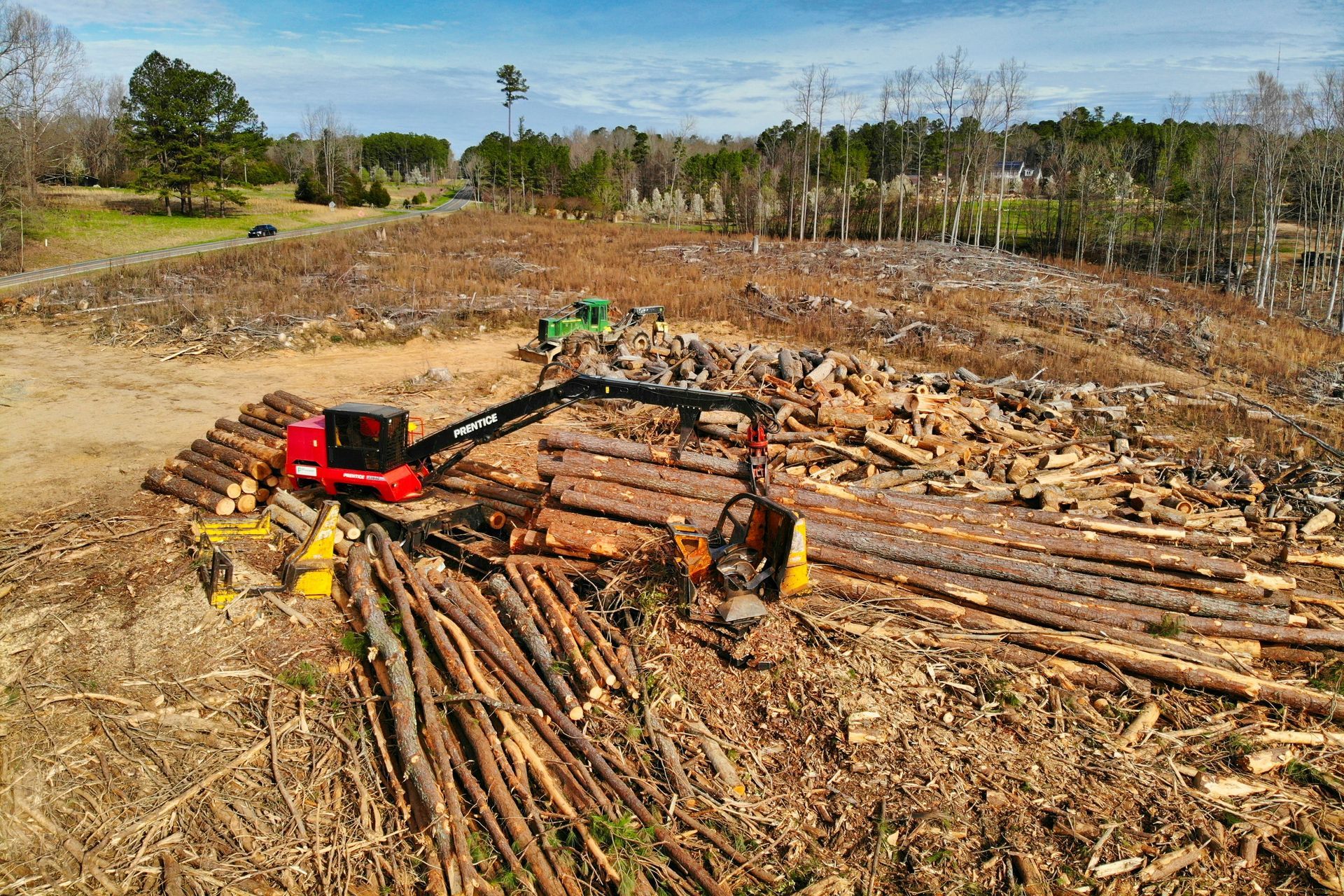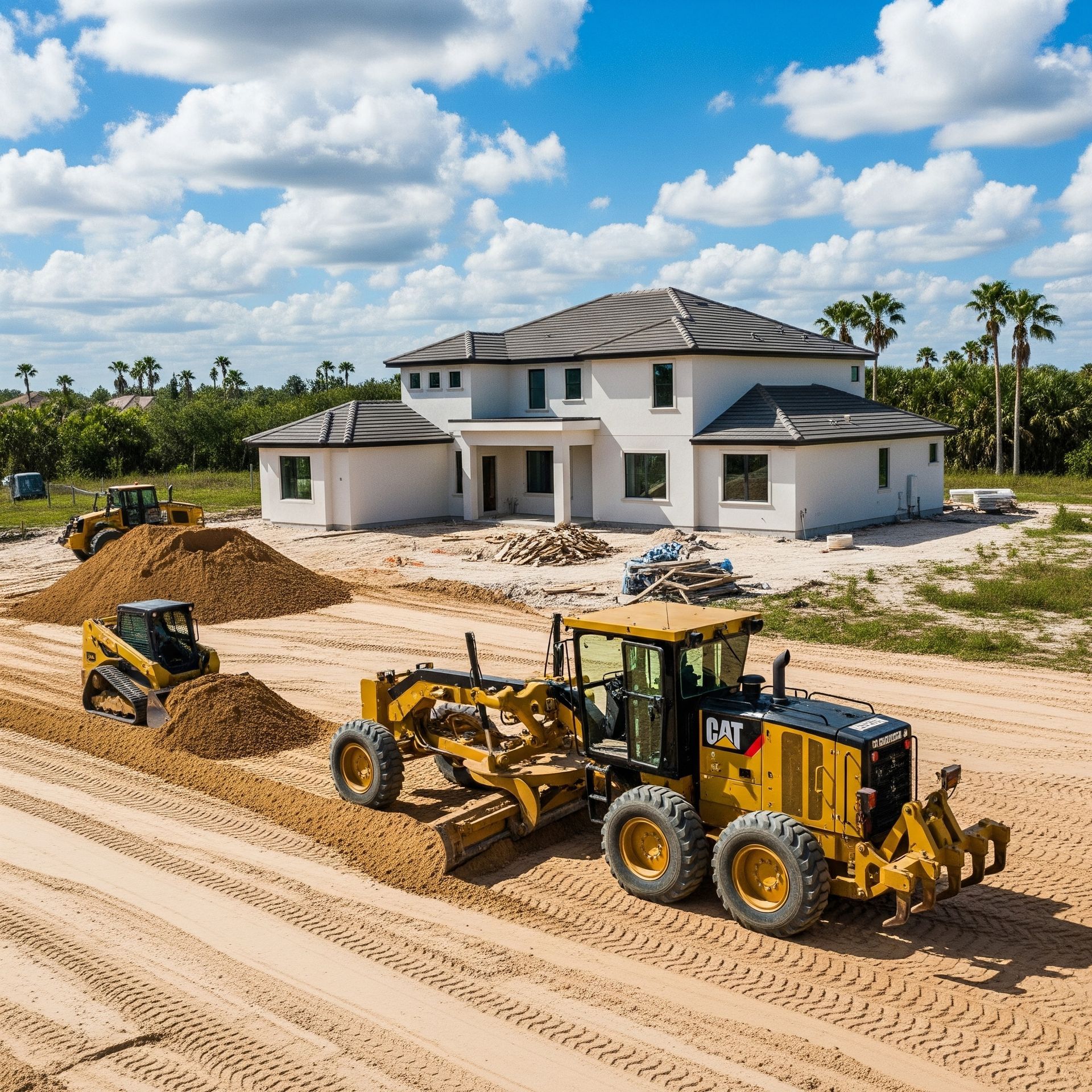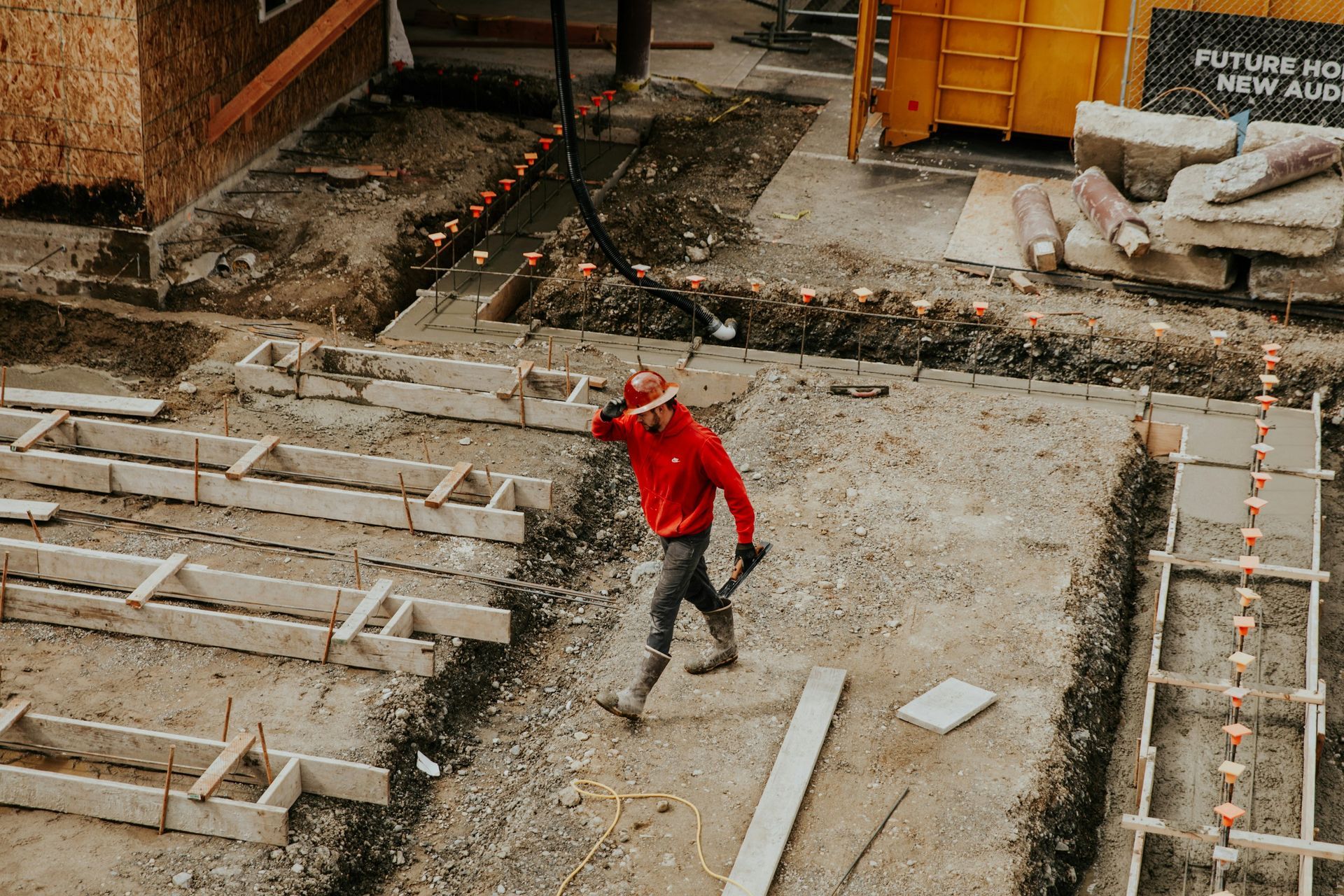The Essential Guide to Land Clearing Before Building in Florida
Before you start building in Florida, you’ve got to know the rules—land clearing services here are strict to protect wildlife and your wallet from fines. Check your soil and spot any underground utilities to avoid surprises. Use the right equipment; bulldozers for big jobs, chainsaws for the small stuff. Don't forget to hire pros if you want it done right and safe—especially in areas where service areas vary in terrain and regulations. Planning well saves time and stress, and there’s plenty more tips ahead to make your project smooth.
Key Takeaways
- Understand Florida's zoning laws and environmental regulations to ensure legal and eco-friendly land clearing.
- Conduct thorough site assessments, including soil quality and topography, to plan effective preparation and avoid issues.
- Use appropriate equipment like bulldozers for heavy clearing and mulchers for vegetation, ensuring eco-friendly disposal methods.
- Obtain all necessary permits and identify protected trees or wildlife habitats to prevent delays and fines.
- Hire experienced professionals to manage the project, ensure safety, and avoid costly mistakes or unexpected expenses.
Understanding Florida’s Land Clearing Regulations
Before you grab that bulldozer, it's smart to get a handle on Florida’s land clearing rules—they’re not just red tape, but important guidelines to keep things safe and legal. When you’re diving into land use, knowing the zoning laws is your first step. Each area in Florida has its own set of rules about what you can clear and build, so it’s like joining a club with specific dress codes—you want to fit in, not stand out in a bad way. These laws protect the environment and your neighborhood, making sure everyone’s space stays nice. Plus, following them helps you avoid fines or delays that could turn your dream project into a headache.
Assessing Your Land and Site Preparation Needs
Now that you’ve got a handle on the rules, it’s time to take a good look at your land and figure out what it really needs. Start with a land topography analysis to understand the slopes, hills, and flat spots. This helps you spot any tricky areas that might need extra work or special attention. Next up, a soil quality assessment is a must. Good soil means a solid foundation for your building, while poor soil might call for some fixing up before you break ground. Don’t worry if this sounds technical—you’re not alone in this, and getting these basics right will save you headaches later. Think of it as giving your land a little health check. Once you know what you’re working with, you can plan your site prep smartly, making sure the land is ready to support your dream project without surprise hiccups. It’s all about setting yourself up for success!
Choosing the Right Equipment for Effective Land Clearing
Since clearing land can feel like a big job, picking the right equipment makes all the difference. You want to feel confident, knowing you’ve got the gear that fits your land’s needs and your clearing techniques.
Here’s a quick guide to help you choose wisely:
- Bulldozers and Excavators – Great for heavy-duty tasks like moving large debris or leveling uneven ground. They’re the muscle of land clearing.
- Brush Cutters and Mulchers – Perfect for clearing thick vegetation without tearing up the soil too much. They work well if you prefer a gentler touch.
- Chainsaws and Hand Tools – Ideal for precise work or smaller spots where big machines can’t reach.
For bigger projects that involve moving earth or preparing a foundation, learning the excavation basics for homeowners is a smart step before renting heavy machinery.
Managing Tree Removal and Vegetation Disposal
When it comes to clearing your land, cutting down trees the right way matters a lot—you don’t want surprises or extra work later. You’ll also need to figure out the best way to get rid of all that green waste, whether it’s hauling it off or turning it into mulch. And hey, don’t forget to keep it legal by following Florida’s rules on tree removal and vegetation disposal, so you don’t end up in hot water.
Tree Removal Techniques
Tackling tree removal might sound like a big job, but with the right techniques, you can handle it without breaking a sweat. First, tree felling is your go-to method for safely bringing down large trees—just make sure you plan the direction carefully to keep things under control. Next up, stump grinding helps you get rid of those stubborn stumps, clearing space and preventing future tripping hazards. Finally, consider limb removal to break down the tree into manageable pieces, making cleanup way easier. Remember, these steps aren’t just about chopping wood; they’re about making your space ready for the next big adventure—building your dream spot in Florida. You’re part of a community that gets it, and with these tips, you’re set to succeed!
Vegetation Disposal Methods
Now that you’ve got those trees down and stumps ground, the next step is figuring out what to do with all that leftover vegetation. You’ve got options, and luckily, some are pretty eco-friendly. Mulching techniques are a great choice—you can turn branches and leaves into nutrient-rich mulch that helps your soil stay happy and healthy. Plus, it keeps waste out of the landfill, which feels pretty good, right? Another cool method is debris recycling, where wood and plant material get repurposed into useful stuff like compost or biomass fuel. It’s like giving your yard waste a second life. If you want to make your clearing project even more eco-friendly, check out the environmental benefits of land clearing and how sustainable practices can support both your project and local ecosystems.
Environmental Regulations Compliance
Since clearing land isn’t just about swinging axes and hauling branches, you’ve got to keep an eye on the rules that protect Florida’s trees and environment. When you manage tree removal and vegetation disposal, regulatory compliance is key to reducing environmental impact.
Here’s how to stay on track:
- Check local permits before cutting—some trees have special protections.
- Use approved disposal methods like chipping or hauling away to avoid fines.
- Follow guidelines for protecting wetlands and wildlife habitats nearby.
Addressing Environmental and Wildlife Considerations
Before you start clearing land, you’ll want to think about the critters and plants that already call it home. Protecting wildlife habitats and keeping native vegetation around can make a big difference for the local ecosystem. Plus, doing a quick environmental check helps you avoid surprises down the road—trust me, nature likes to keep things interesting!
Wildlife Habitat Protection
Although clearing land is exciting, you’ve got to keep in mind the critters who call Florida home. Protecting wildlife habitats isn’t just good karma—it helps keep local ecosystems healthy. To do your part, follow these steps:
- Identify and preserve existing wildlife corridors so animals can safely move between areas.
- Plan your clearing to avoid disrupting sensitive nesting or breeding sites.
- Support habitat restoration efforts by planting native species and creating buffer zones.
Native Vegetation Preservation
Keeping those wildlife corridors and nesting sites safe is just one piece of the puzzle. When you protect native vegetation, you’re doing a big favor for native species conservation and helping maintain Florida’s unique ecological balance. Think of it like keeping your neighborhood’s roots strong—those plants support everything from bugs to birds, and even the soil itself. By preserving native plants during land clearing, you’re not just clearing land; you’re inviting nature to stick around and thrive alongside your project. It’s a win-win—you get a beautiful, natural space, and local wildlife gets a safe place to call home. So, next time you’re planning, remember: saving native vegetation is like giving back to the community that’s been here long before us.
Environmental Impact Assessments
Since you’re planning to clear land in Florida, you’ll want to get familiar with Environmental Impact Assessments, or EIAs for short. These assessments help you understand how your project might affect local wildlife and the environment. Following proper assessment procedures is key to protecting nature and keeping your project on track.
Here’s what you’ll typically do:
- Identify potential environmental impact, like how clearing might disturb habitats or water flow.
- Consult with experts to evaluate risks and suggest ways to minimize harm.
- Submit your findings to local agencies for approval before starting.
Hiring Professional Land Clearing Services in Florida
When you're ready to clear your land in Florida, hiring a professional can save you a whole lot of headaches and sweat. These folks know the ins and outs of local rules, so you won’t be stuck guessing or making costly mistakes. Plus, they bring the right gear to handle everything efficiently, which helps keep your project timelines on track. Before you pick, chat about cost considerations—getting a clear estimate upfront means no surprise bills later.
You want someone who respects your budget but also values quality and safety. Think of it like joining a team that’s got your back, making sure your land is prepped right, so your building dreams don’t stall. It’s all about trust and teamwork here, and a pro service can give you both, making your Florida land clearing feel less like a chore and more like a smooth step toward your new home. Professional teams often provide full packages, including
grading and excavation services to level your land properly, or even
demolition services if you need to remove old structures before breaking ground.
Preventing Common Land Clearing Mistakes and Delays
Although land clearing might seem straightforward, it's easy to trip up on mistakes that slow you down or cost more than you planned. To keep your project on track and avoid common mistakes, here’s a quick checklist to help you out:
- Know your permits: Skipping permits is a classic error that leads to big project delays and fines. Make sure you get all the paperwork sorted before digging in.
- Check the land carefully: Overlooking underground utilities or protected trees can stall your work and add unexpected expenses. Take your time with a thorough site survey.
- Hire the right crew: Trying to save money by going DIY or picking the cheapest service can backfire. Experienced pros handle problems smoothly, saving you headaches and delays.
Frequently Asked Questions
How Long Does the Land Clearing Process Typically Take in Florida?
You’ll find land preparation timelines in Florida usually span a few days to a few weeks. Your project's duration depends on factors like lot size, vegetation density, and weather, so plan accordingly for smooth progress.
What Are the Average Costs Associated With Land Clearing in Florida?
Like a knight weighing his armor, you’ll find that land clearing costs vary widely based on cost factors like land size, vegetation, and terrain. Expect to budget between $1,000 and $5,000 to join the builders’ community.
Can Land Clearing Impact Nearby Property Values?
Yes, land clearing can impact nearby property value by changing land aesthetics. If done thoughtfully, it can enhance neighborhood appeal, helping you and your community feel proud and connected to the surrounding environment.
Are There Seasonal Restrictions for Land Clearing in Florida?
Coincidentally, Florida’s seasonal weather and wildlife considerations mean you can’t clear land anytime. You’ll want to avoid nesting seasons and heavy rains, so you’re protecting nature and staying within legal limits, just like your neighbors do.
What Permits Are Required for Land Clearing Beyond Local Regulations?
You’ll need to secure permits aligned with state regulations, especially focusing on environmental considerations like wetlands or endangered species. Connecting with local agencies helps you stay compliant and feel part of a community protecting Florida’s natural beauty.
Final Thoughts
Think of clearing your land like prepping a blank canvas for a masterpiece—every tree you remove and every stone you shift sets the stage for your dream home. It might feel tricky, like taming a wild garden, but with the right tools and know-how, you’ll turn chaos into calm. If you need a little inspiration, check out our gallery to see how others have transformed their properties. So, take a deep breath, plan smart, and don’t be afraid to call in the pros. Your future self will thank you for it!
Ready to get started?
Contact us today and let our team help you bring your vision to life.
